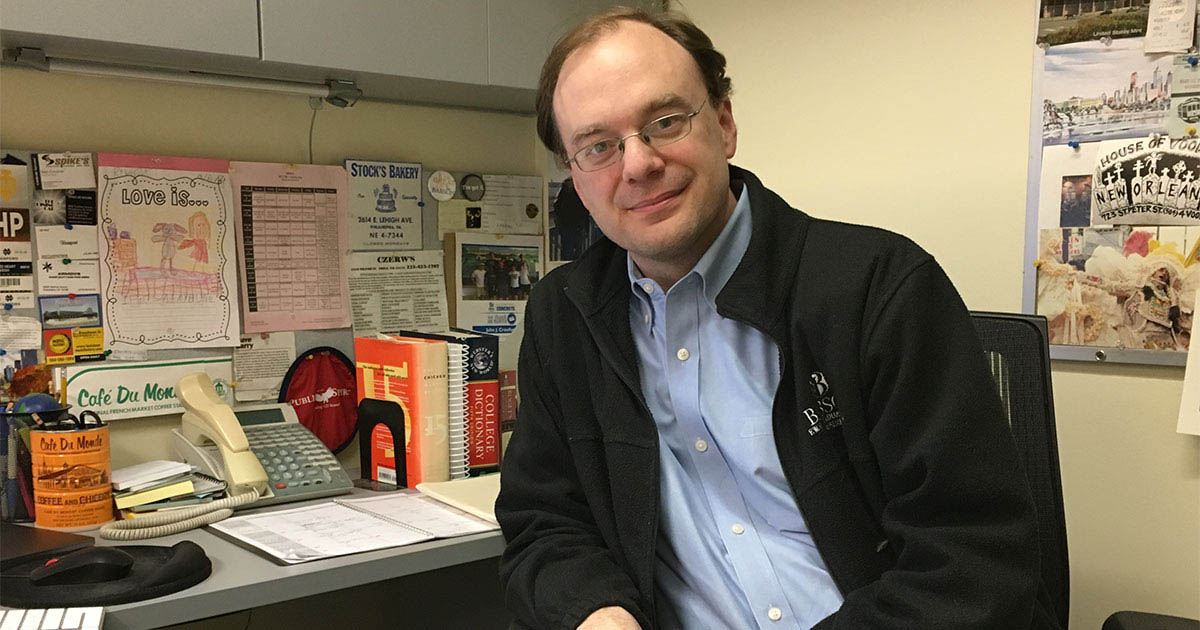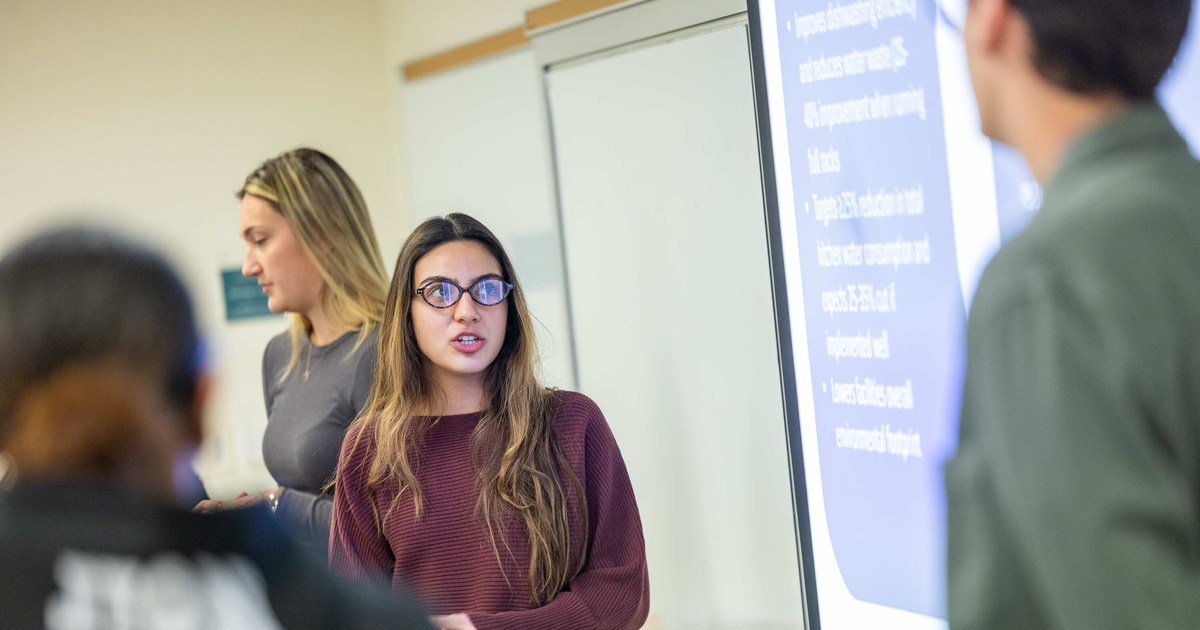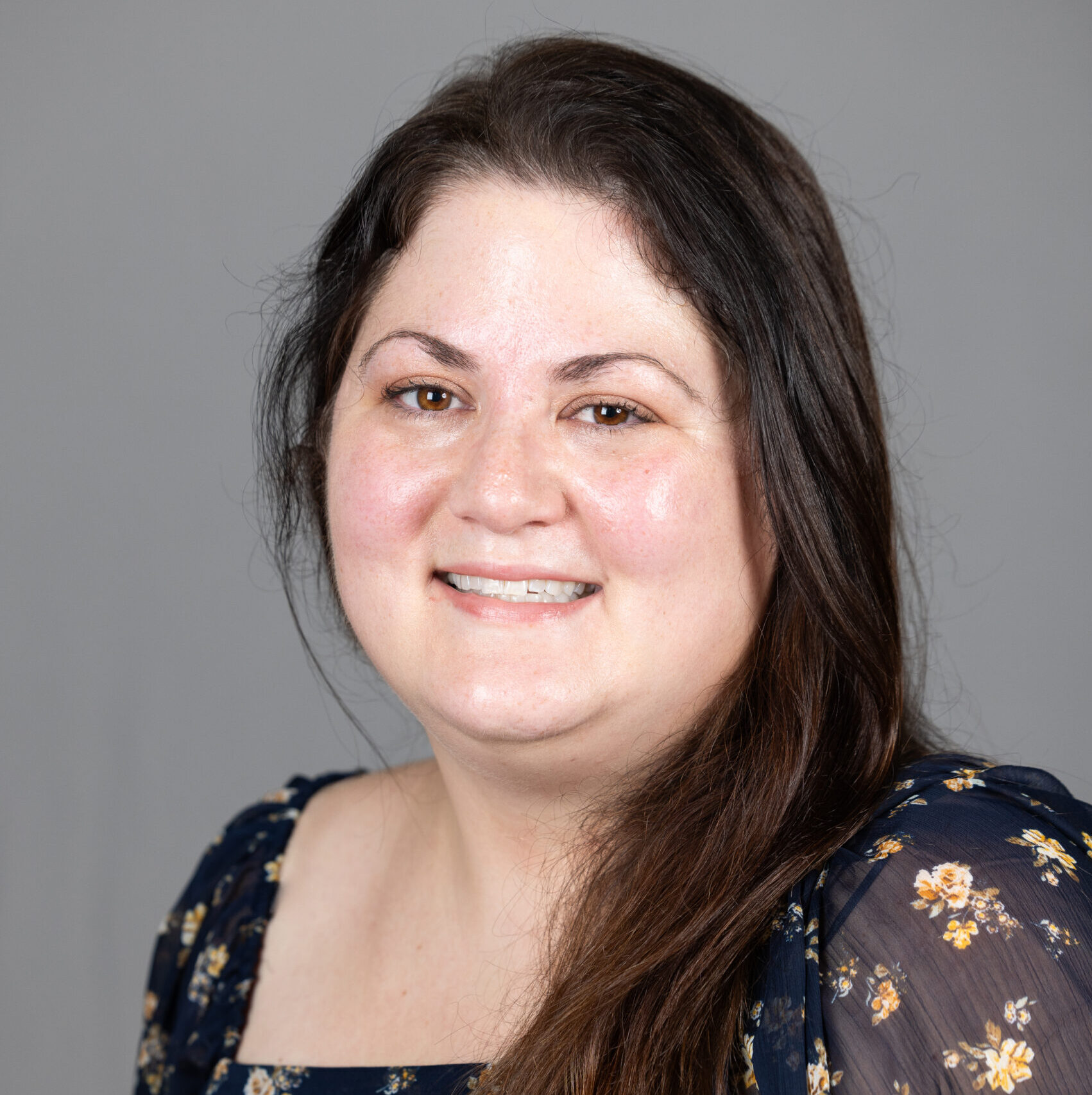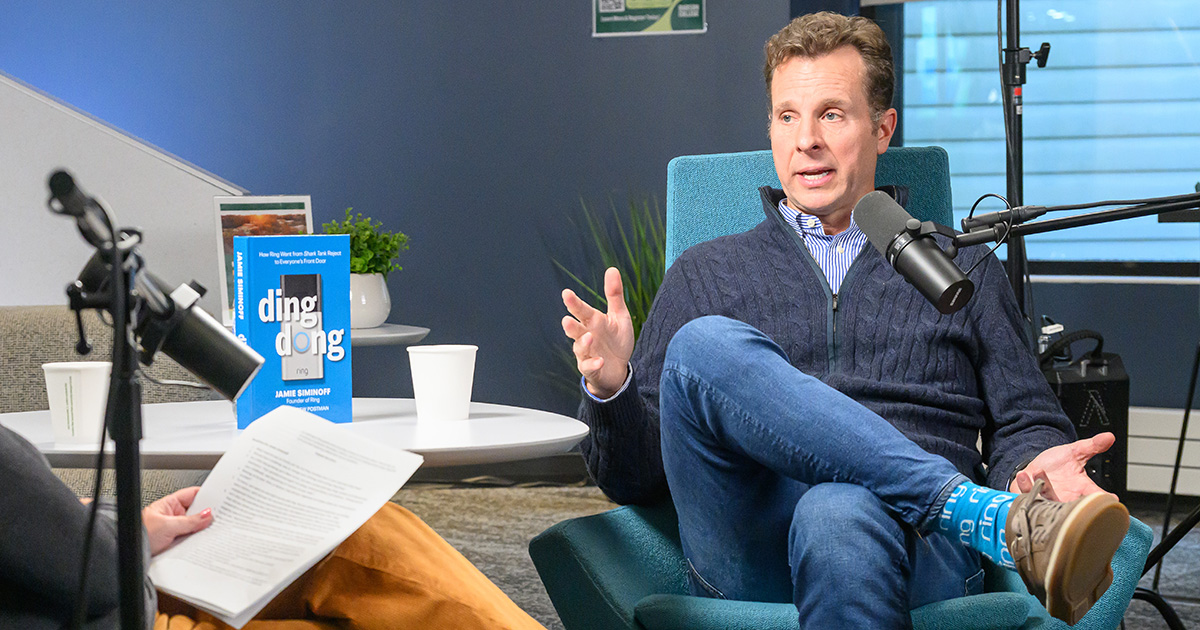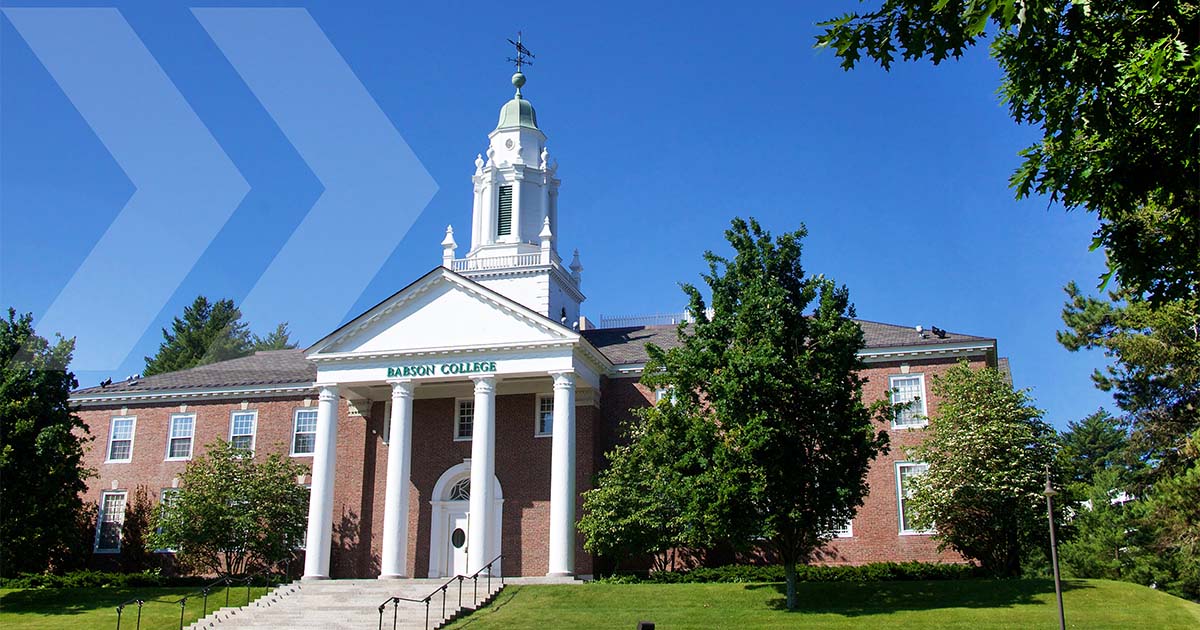The No. 2 College in America: A Look Behind Babson’s Stellar Ranking
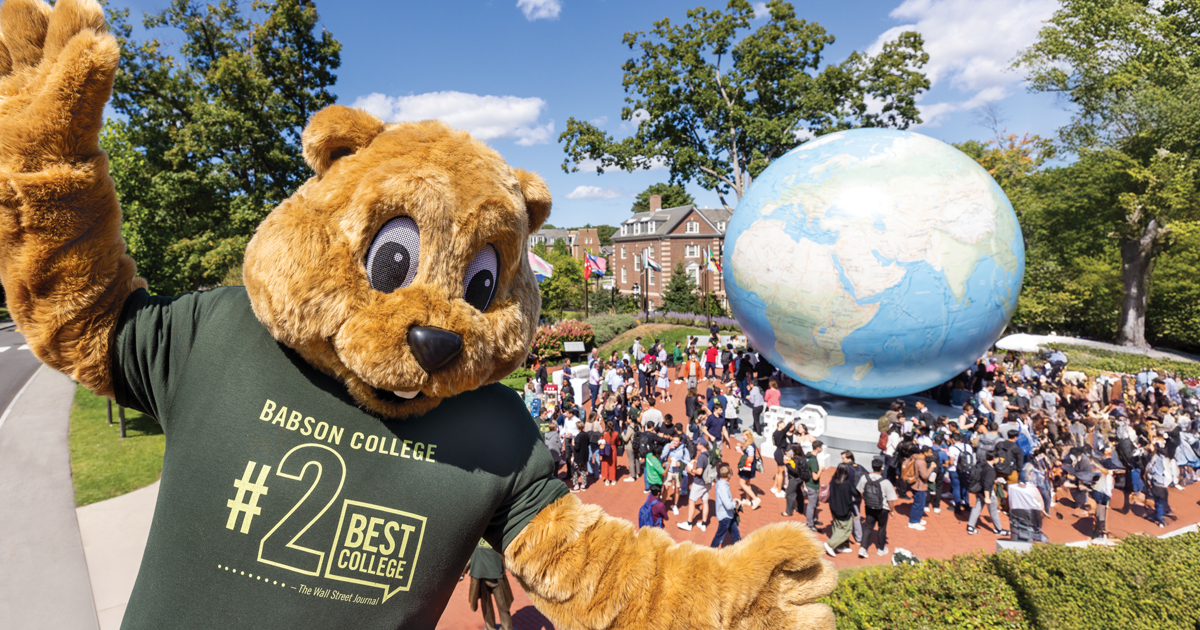
When it arrived, the news was exhilarating.
Back in September, The Wall Street Journal announced that it had ranked Babson as the second best college in America, a year after the publication had placed the institution 10th.
In the moment, such a high ranking in the upper echelon of higher education—right behind Princeton and in front of Stanford—may have sparked some surprise. Babson always has been an innovator and leader, as well as the top-ranked school for entrepreneurship for more than 30 years, but how could a small college, dedicated to business and entrepreneurial leadership, leapfrog some of the world’s most renowned institutions?
BABSON MAGAZINE: Read the complete Winter 2024–2025 issue.
For the College community, the answer is simple. The lofty ranking is merely a well-earned recognition. Babson No. 2? Definitely.
“I have been here a long time, and the place has always been amazing,” says Gerri Randlett, who started at Babson in 1996 in the undergraduate admissions office and is now the assistant vice president of alumni engagement and annual giving. “The world has caught on to what I have known since 1996.”
“I have been here a long time, and the place has always been amazing. The world has caught on to what I have known since 1996.”
Gerri Randlett, assistant vice president of alumni engagement and annual giving
The 2025 WSJ/College Pulse ranking of U.S. colleges focuses on how effective schools are in setting up their graduates for financial success, something at which Babson has long excelled. The experiential, entrepreneurial, and multidisciplinary learning that happens at the College prepares students well for their careers and their lives.
“This remarkable milestone holds great significance and rightly places Babson College in exceptional company,” says Babson President Stephen Spinelli Jr. MBA’92, PhD. “It reflects how Babson builds entrepreneurial leaders, people who understand a diverse, highly dynamic environment, empowered to lead successful and impactful lives.”
That is exactly what has propelled Babson to its prominent place in higher education.
A Ranking with a Different Approach
The Babson community rejoiced in the announcement of the Journal ranking. The next morning, fittingly on Founder’s Day, a time to honor College founder Roger Babson, Spinelli grew emotional talking with Babson staff and faculty, saying that Roger would have been proud.

A few days later, a joyous celebration was held at the Babson World Globe. T-shirts were handed out. Banners were hung. Meanwhile, alumni around the world cheered news of the ranking. “People were so excited,” Randlett says. “We got emails. We got a ton of comments on social media. We got texts. We got WhatsApp messages. There was a ton of pride.”
Of course, this is not the first time Babson has found success in the rankings. For decades, U.S. News & World Report has ranked the College No. 1 for entrepreneurship education on both the undergraduate and MBA levels. Tumen Bayar is director of institutional research at Babson, and, among his other responsibilities, he supplies data to organizations conducting rankings.
Rankings remain a popular way for students (and their parents) to evaluate colleges, Bayar says, but considering the rising costs of higher education, the Journal ranking takes a different approach. Instead of considering some of the usual factors that go into rankings (student-faculty ratio, standardized test scores, spending per student), the Journal places a heavy emphasis on outcomes. “How much value are you getting from a college?” Bayar says.
Specifically, 70% of an institution’s Journal score is composed of the value a school adds to the expected graduation rates and salaries of graduates and how long a degree takes to pay for itself. In all three, Babson received stellar marks, particularly in regard to its impact on earnings.
Additionally, 10% of the Journal ranking looks at diversity, another Babson strength. The final 20% is composed of a survey asking students and young alumni about their college experience and how they learned and grew during their school years. Those survey results, Bayar says, reveal a group who are very satisfied with their time at Babson.
“(The survey) is an awesome reflection of all the work the Babson community does for students,” Bayar says. “Students feel like they learned something and feel satisfied with the College’s learning facilities. They feel like the College prepared them for a career. They feel like they can recommend Babson to friends. And they feel they have grown personally. It built their character.”
Starts with the Curriculum
Taken all together, the factors that go into the Journal ranking speak to how effective Babson is at achieving its core purpose: readying students for the future.
That effectiveness isn’t much of a surprise. Anecdotally through the years, Randlett has often heard from young alumni entering the workforce who felt one step ahead of their co-workers. “Our alumni have always felt that Babson has prepared them well for what’s next,” she says. “Our alums have always valued the education they got here, and the faculty who have remained friends and mentors.”
So, how is the College able to do this? How is Babson able to consistently turn out such well-prepared and successful alumni that a prestigious ranking now recognizes the institution as the second best college in the country?
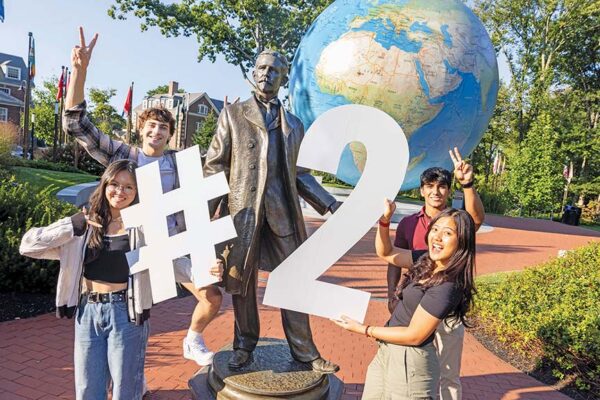
A major part of that answer comes down to the curriculum, which is broad and robust, full of learning and action, created and taught by world-class faculty. “Students are moving through this curriculum that is hands-on applied work alongside an education that takes a deep dive into different disciplines and functions in the liberal arts,” says Wendy Murphy, professor of organizational behavior and the associate dean of the Undergraduate School. “That translates to hitting the ground running day one as professionals.”
One way to characterize Babson’s curriculum is that it is multidisciplinary. Students are taking half of their credits in the liberal arts, which gives them a strong foundation for their education. In one required course, Socio-Ecological Systems, two professors from different disciplines (one from the natural sciences, the other from the humanities or social sciences) co-teach a course on integrated sustainability, giving their students a wide-angle, interdisciplinary approach to the subject.
Additionally, the curriculum exposes students to the gamut of business disciplines. That’s everything from accounting and finance to management and operations, and students learn the intertwined role that each of these fields plays in business.
This is exactly what happens in Foundations of Management and Entrepreneurship (FME). Students in the signature Babson class, which the Journal highlighted in its article on the rankings, spend the school year starting and managing a venture. In the process, they experience the various business disciplines firsthand. “We try to help them understand how everything fits together,” says Donna Stoddard P’21, Babson’s Dean of Faculty and a professor of information technology management. “What is marketing’s role? What is HR going to do? What about accounting?”
Experiential Learning, Diversity, and Entrepreneurship
FME also illustrates another hallmark of a Babson education: experiential learning. From the moment they step on campus, students are placed in the experiential environment of FME. For their entire first year at Babson, they are hurled into the world of business, confronting challenges and figuring out solutions. A lot of growth happens in that year.
“We get to watch them develop,” Stoddard says. “They come in as high school seniors and leave as college sophomores.”
Beyond FME, Babson students have many other experiential opportunities to practice what they’re taught in class. To name a few, they can manage a portion of the College endowment through the Babson College Fund, address a business challenge with a team of student consultants in a Management Consulting Field Experience, and collaborate with an external organization in an Advanced Experiential course.
“Students feel like they learned something and feel satisfied with the College’s learning facilities. They feel like the College prepared them for a career. They feel like they can recommend Babson to friends. And they feel they have grown personally. It built their character.”
Tumen Bayar, director of institutional research
This is all tangible, real-life experience before students even graduate. “They are learning to collaborate and communicate,” Murphy says, “through team projects, partnerships with external companies, study-abroad experiences, and co-curricular clubs and activities that reinforce what they are learning in the classroom.”
The diverse environment at Babson also prepares students well for their post-graduation lives. “Diversity—it is the very fabric of who we are,” Murphy says. “We have always been a global school.” That diversity is reflected not only in the student body but also in the array of lessons and materials utilized in the classroom. “We create an environment where all voices are heard,” Murphy says. “Inclusion is a primary value of our faculty.”
In short, Babson is a place open to many perspectives and backgrounds. “That helps students to better understand the world they live in,” Stoddard says. “It helps them when they get out into the real world.”
Finally, one can’t overlook entrepreneurship, the very lifeblood of Babson. Students are taught to find opportunity, to learn from mistakes, to roll with uncertainty, to rally with others to get things done. “Those are the fundamentals of a Babson education,” Stoddard says.
Students are future entrepreneurial leaders, and that is an enviable thing to be in life, whether one starts a business or not.
A Community Behind Them
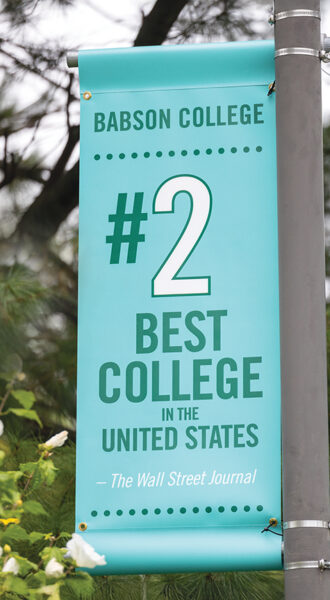
Given all their learning and experiences at Babson, students are more than ready for the job market. “They have deep experience with communication, teamwork, critical thinking,” says Ann McAdam Griffin, director of Babson’s Hoffman Family Undergraduate Center for Career Development (CCD). “These are the competencies that employers are looking for in early career hires.”
Students may be equipped with their Babson education, but CCD’s mission is providing whatever else is required for them to be successful in a job search. That means advising, planning recruiting events, holding workshops on topics such as resume writing, and supplying business clothes for students in need.
It is work that McAdam Griffin and her team are good at. When The Wall Street Journal named Babson the second best college in America, the publication also ranked the institution No. 2 for Career Preparation. “Whatever students need, we support them through their journey,” McAdam Griffin says.
She is quick to point out, however, that the work of career preparation goes beyond CCD. It involves everybody from professors giving advice to alumni providing a helpful connection. “It is the whole community,” McAdam Griffin says. “It is the faculty and staff, it is the courses, it is the institutes, it is the alumni, and it is our employer partners.”
With the entire community of the No. 2 college in America behind them, students venture forth. Stoddard marvels at how far they’ve come and at how far they’ll go. “We offer so much to our students. They take advantage of it,” she says. “At graduation, you see them and wave and watch them head out for the next phase of their lives.”

Posted in Community, Entrepreneurial Leadership, Outcomes
